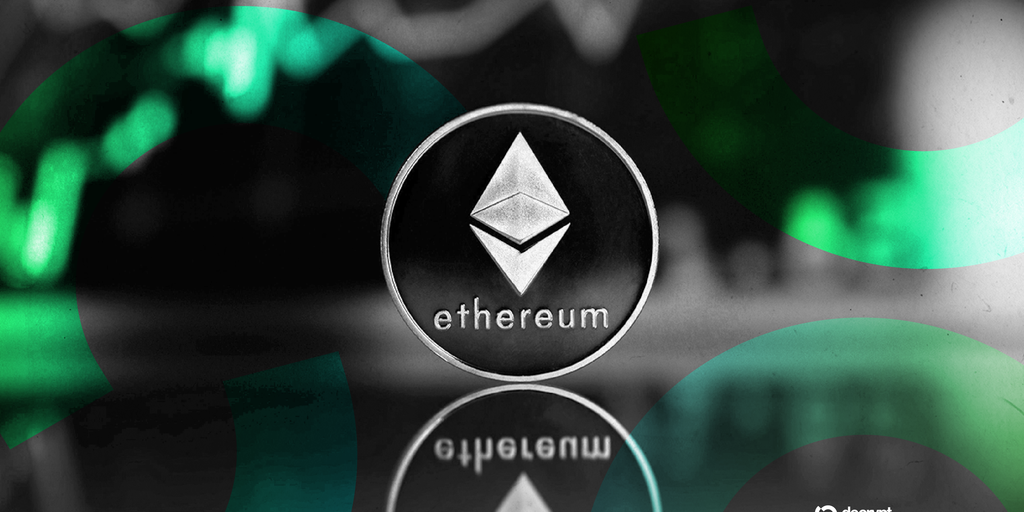About the Author
As EY Global Blockchain Leader, Paul Brody is responsible for driving initiatives and investments in blockchain technology across consulting, audit, and tax business lines, including the build-out of the first EY global SaaS platform, Blockchain.EY.com. With Brody at the helm, EY was the first and only professional services firm to commit to public blockchains and Ethereum.
The views expressed here are his own and do not necessarily represent those of Decrypt.
Have you heard? Ethereum is dead. Or no…wait, it is pivoting. The price isn’t high enough. Other chains are gaining traction. Something must be done.
Ethereum is not dead. It is not pivoting. It’s doing just fine.
The constant chatter about Ethereum online seems to fulfill a need for drama that the network itself has failed to provide. Ethereum has been the world’s leading and largest programmable blockchain since its inception. As Ethereum approaches its 10th birthday, it remains the preferred destination for digital asset investors, banks, and start-ups in the crypto ecosystem.
Perhaps the biggest source of friction in the ecosystem comes from the gap between those who see Ethereum as a computing platform—the foundation for the future of digital finance—and those who would like it to be the ideal digital asset and store of value, similar, if not better than Bitcoin. For the latter group, Ethereum’s low asset price relative to Bitcoin is a perpetual source of disappointment.
For people who see Ethereum primarily as a computing platform, the low asset price is secondary to the network’s enormously successful transformation over the last few years. In their view, and my own, Ethereum has gone from strength to strength.
Ethereum then & now
Turn back the clock five years and things looked different. Ethereum was closer to a wildly successful proof of concept than the future of finance.
The network struggled to execute more than a million transactions a day, and when it became congested, transaction fees reached absurd levels, as much as $50 for a single payment or transfer. And every transaction came with a sizable carbon footprint, thanks to the proof-of-work transaction processing system.
Today, the proof-of-work system is gone. In its place, proof of stake handles the same workload with a carbon footprint 99% lower.
Ethereum’s capacity crunch is also a distant memory. Today, the network can handle up to 250-450 million transactions per year, according to recent estimates. Over 100 companies have built expansions on top of Ethereum (known as Layer 2 networks). The enormous mismatch between available capacity and actual typical demand has led to a collapse in transaction fees. Fees on these expansion networks are reliably between $0.01 and $0.10, per data on l2fees.info.
Lower transaction fees mean lower “dividends” to network stakeholders. Ethereum’s proof of stake system and Layer-2 scaling were so successful that plunging fees have effectively reduced the “yield” on staking, reducing the value of Ethereum in the views of some investors, especially those that see Ethereum as just a variation on Bitcoin.
But Ethereum is not Bitcoin. Ethereum’s remarkable success has always come from its strength as a platform on which to build. Platforms gather strength over time, fueled by developer communities and the continuous introduction of new capabilities.
This is where Ethereum really shines. The network has operated for nearly a decade without downtime, executing major network upgrades every six to eight months. No other blockchain ecosystem comes close in terms of reliability.
The Ethereum of tomorrow
The Ethereum Foundation (EF), the organization that stewards the development roadmap, has invested strategically in critical technologies and, very importantly, in resilience.
Nearly every major component of the network infrastructure has multiple unique providers, many of them funded by grants from the EF. This means no single point of failure. More than a million people stake Ethereum, per data on Beaconcha.in, and there are more than 10,000 active network nodes. The latest Ethereum roadmap, unveiled in November, is a multi-year path to another order-of-magnitude increase in capacity and performance.
None of this is terribly interesting if you want to make a quick buck selling a meme coin right now. But it is all critically important to banks, corporations, and governments thinking about rebuilding the future of their financial infrastructure. This second group of builders moves more slowly but with far greater long-term value. It’s no surprise that more than 85% of the “real world” digital assets and more than 50% of stablecoin value are on Ethereum.
The asset price of Ethereum may yet recover as rising demand offsets low transaction prices. The pricing pattern of Ethereum now is going to be different.
It’s not digital gold, swinging up and down based on geopolitics. It’s the next network computing platform, driven by sustained growth in transaction volumes. If you adjust your viewpoint, the path upward and onwards becomes a lot more clearly visible.
Daily Debrief Newsletter
Start every day with the top news stories right now, plus original features, a podcast, videos and more.









